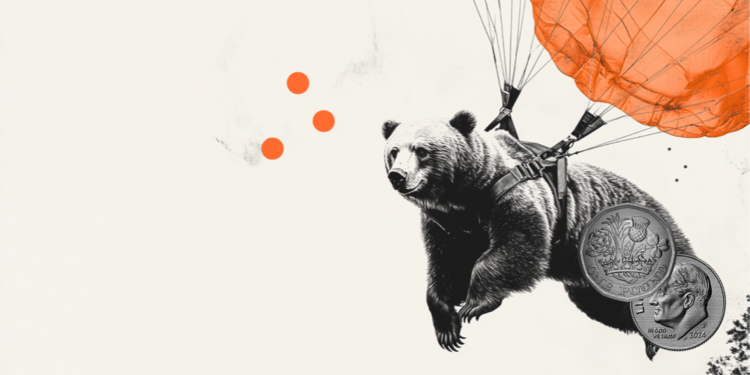A bar in Tokyo has been working to reintroduce locals and visitors to the taste of doburoku, one of the oldest and most controversial drinks in Japanese history. Heiwa Doburoku Kabutocho Brewery is located in the Nihombashi neighborhood in eastern Tokyo . During the Edo period (1603–1868), this area prospered with the activity of boats carrying shipments of sake.
With this in mind, the Heiwa Shuzou brewery, which has been producing sake in Wakayama prefecture since 1928, chose to open this rare bar specializing in doburoku in one of the city’s most sophisticated neighborhoods. Before venturing out to try a glass, see below what you need to know about this historic and controversial drink .
What is doburoku?
Often considered the ancestor of today’s sake, it is no coincidence that the characters that make up the word 濁酒 mean “cloudy,” or unrefined liquor. To distinguish this type of cloudy Japanese alcohol from the ubiquitous, clear sake, there are two distinct, if somewhat misleading, categories: seishu (清酒), or clear sake, and doburoku (濁酒).
Consequently, sake and doburoku have a fundamental difference in their respective productions . Typical sake requires a yeast starter, called shubo, and the addition of three main ingredients — steamed rice, kouji (moldy rice fungus), and water — over the course of several days.
However, when making doburoku, they are all added simultaneously with the yeast starter, making the resulting mixture comparatively brimming with sugars.
The sugars then begin to break down the yeast, stopping fermentation much sooner. Ultimately, what’s left is a sweeter liquid with a much lower alcohol content, formally known as doburoku.
Why is doburoku considered a controversial drink?
Doburoku has been around for almost as long as rice cultivation in Japan. It was the drink of choice for farmers and Shinto priests alike. With a relatively simple recipe — that is, throwing everything into the proverbial crucible at once — doburoku was common throughout the countryside.
The tradition of producing craft beer at home has remained active and constant over the centuries.
According to Utsunomiya Hitoshi, director of the Japan Sake and Shochu Producers Association (JSS), in 1855, there were 459 doburoku producers in Edo (present-day Tokyo) alone.
However, as a result of the end of the Edo period (1603–1868), all feudal lords were forced to abandon their regional domains in the name of the centralized Meiji government, based in the new capital, Tokyo.
From the drastic 180-degree turnaround in governance, highly structured institutions emerged, including a strengthened and rigorously organized tax collection system. Realizing that Licensed breweries and distilleries were a vital source of income for the new government measures to limit home production began to take effect.
Utsunomiya says that in 1880, the quantity of homemade alcoholic beverages began to be restricted, while in 1882 a licensing system was introduced. Then, in 1896, an alcoholic beverage tax was imposed on all homebrew production, culminating in the complete ban on homebrew alcoholic beverages in 1899.
In short, all doburoku produced from then on was called mitsuzoushu (密造酒), “secretly produced alcohol” or moonshine.
However, even during this ban, doburoku could still be found in Japan. Significantly, Shinto shrines were able to continue using the drink for rituals. After World War II, due to a shortage of sake, the Korean drink makgeolli, an unfiltered cousin of doburoku made from rice, wheat, malt and water, was a popular alternative.
Despite the fact that the home production is still illegal the Japanese government allowed inns and restaurants in special deregulation zones, particularly in regions where economic growth had stagnated, to sell doburoku commercially in 2003.
As of 2021, there are 193 establishments authorized to sell doburoku across the country.
How is the current situation with doburoku?
Opened in 2015, the Sake Hotaru in Tokyo, was the first legal place to offer doburoku in Japan’s capital. But the bar’s owners only started selling it to the public in late 2016.
Since then, more options have emerged. Most notably, in June 2022, the aforementioned Heiwa Doburoku Kabutocho Brewery opened a bar near Nihombashi.
Norimasa Yamamoto president of Heiwa Shuzo, estimates that half of the bar’s visitors are foreigners.
“We often receive questions about the difference between sake and doburoku, how many days it takes to make it and how it is produced,” he says of the bar’s customers.
In addition to doburoku, the brewery’s own brands of sake and beer are available. However, keep in mind that if you want to place any order, the brewery does not accept cash.
The flavor is intense, with tasters comparing it to both cheddar cheese and noni, a Polynesian fruit with a unique flavor.
Travelers who can’t make it to Japan can try doburoku in other locations. In Brooklyn, New York, in the United States, Kato Sake Works sells small quantities of the drink.
However, owner Shinobu Kato says “the context doesn’t exist here,” as Americans are less likely to have heard of doburoku.
“Apart from a few sake shops that are very familiar with and interested in our doburoku,” says Kato, “the majority of sales are in the tasting room, both for bottles to go and drinking by the glass.”
Otodokê: new delivery focuses on traditional Japanese lunchboxes in SP
The post Discover a Japanese drink that was once banned, but has returned to Tokyo bars appeared first on CNN Brasil V&G.
Source: CNN Brasil
Johanna Foster is an expert opinion writer with over 7 years of experience. She has a reputation for delivering insightful and thought-provoking articles on a variety of subjects. Her work can be found on some of the top online news websites, and she is currently lending her voice to the world stock market.







